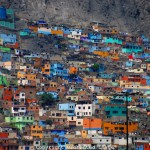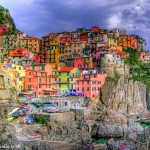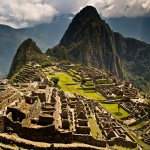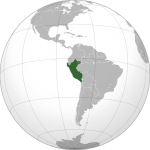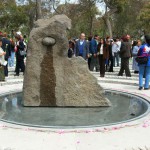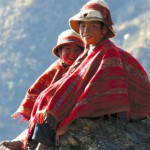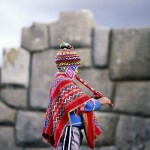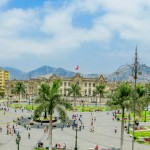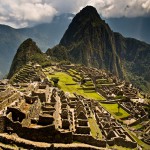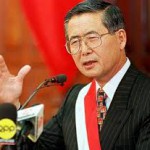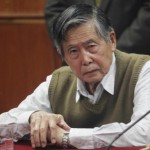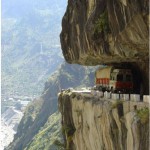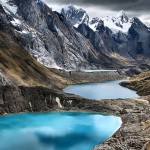In the South Americas the area now known as Peru was deeply affected by the imperial nature of colonialism because the targeted people and resources became the pawns of the Spanish monarch during the early 15th century. The factors which contributed to establish Peru as an economic target for numerous competitors were country’s extensive mineral, agricultural, and marine resources and particularly fertile soil in combination with tropical climate which helped to set perfect conditions for a wide variety of plant life. Thus it became to be the perfect grounds on which the Inca Empire could thrive. The Spanish first arrived on Peruvian soil in 1531, led by Francisco Pizarro, a Spanish conquistador who also led the invasion against the Inca Empire. Tupac Amaru was the last official emperor of the Inca Empire and was executed in 1572 after being accused of raising an army to resist the colonial forces. This year is also known as the year when the Inca Empire fell and the year when the Viceroyalty of Peru was created.
The Viceroyalty of Peru was a colonial administrative district based on the principle of king’s representation in a person of viceroy who oversaw the area. In the 16th century, viceroyalty was the main governing body of the Spanish speaking South America. Since the frequency of contact with Madrid did not allow for the Spanish to control live in the Viceroyalty, it enjoyed great level of autonomy on local level. The Viceroyalty of Peru was very rich, because they owned one of the biggest silver mines in the world, located in Potosí, modern-day Bolivia, which was part of the Peruvian region until the 18th century. Mined silver was converted into coins, and one-fifth was collected as a tax for the Spanish Crown, making it the most important and biggest income from the Spanish colonised world which contributed to the importance of Spanish Habsburgs in Europe. Created tax revenue helped to finance European wars conducted by the Spanish and relieve their debt.
Around 1700 a change on the Spanish throne occurred when the House of Bourbon took power. The Bourbons were also more efficient with the collection of taxes, introduced free trade and, very importantly, also provided tax reductions to the silver mining industry. They also created a stronger military force in Peru.
Even though the Incas were less suppressed than under the Habsburg rule, there was a series of uprising all over the 18th century. With the most significant being the Comunero Revolt in 1721 – 1735 against Jesuits and Spanish administrative decisions and Sierra Uprising in 1780 connected to Túpac Amaru II. The first significant revolution against the Spanish monarchy led by Tupac Amaru II, an indigenous leader who was a direct descendant of the ancient royal family of Inca, was a key part to the eventual liberation of Peru. The revolt of Tupac Amaru was rooted in the abuse of indigenous Indians with indentured servitude and wrecked families with forced migration and prostitution by women by the Corregidor, Antonia Arriaga. Following the failure of the Tupac Amaru II rebellion in the 1780s, others uprising in Peru failed to prevail due to the support of the viceroy by the “Lima oligarchy”, who are a group of merchant elites.
The motivation of being fully liberated from the Spanish monarchy of Argentina lead to the invasion of Peru by General San Martin to free it from the rule of Spain. During 1821, he has successfully won several battles against the viceroy in Spain and captured viceroy Pezuela who led the army to defend Peru. Peru was initially liberated on 28 July after the new viceroy quit his job and General San Martin’s army entered Lima. However, despite capturing the capital of Lima, Peru did not gained independence fully as majority of the country was still under the control of the royalists.
Peru was finally liberated when General Bolivar joined the battlefield following a plea from San Martin, who lacked power against the strong Spanish force, to fight against the royalists. With the victory of battle of Junin and Ayacucho, the independence of Peru was secured after destroying the Spanish power. Despite gaining independence, the transition from colonial to a modern state proved to be difficult as the country struggled with political, social and economic problems. Furthermore, revolutionary movement to overthrow the government continued even after liberation with the rise of neo-Maoist Shining Path (Sendero Luminoso) and the Tupac Amaru revolutionary movement to overthrow the government. These guerrilla movement illustrate the struggles within Peru to come to terms with its history; postcolonial and post-violence.
One of the ways this postcolonial memory is brought to life is by the Shining Path movement. The main focus of this group is on the constant conflict between peoples and their conceptualization of their nation. This brought Peru to its current complex state of reconciliation and memorialising of violence. This complexity is analysed in the case study of a monument built by Dutch sculptor Lika Mutal in the capital, Lima. Her aim was to design a sculpture that “in addition to being a tribute to the victims, will be an efficient instrument to make the population gain greater awareness of what happened in Peru during the years of internal armed conflict and to promote reflection and invite the memory and construction of a more just, democratic and solidary Peru”. In 2007, two years after it was opened, the concept of the monument was met with conflicting reactions and interpretations from social and political groups in Peru.
The conflict stemmed from the disagreement on whether to recognize the victimizers as victims of violence in Peru and who is responsible for the violence which transpired.
The morning of July 24, 2007 the monument was found covered in orange paint, a colour which is associated with former president Alberto Fujimori and his ten-year rule (1990-2000). After his presidency Fujimori fled to Japan amid a corruption scandal and allegations of human rights violations which occurred alongside Peru’s struggle against the Shining Path and the MRTA. His presidency did not only include these violations against human rights, but also a ‘Fujimoristan’ narrative of Peruvian history which, according to consecrated amnesty law, in 1995 aimed to forget the violence in favour of the ‘memory of salvation’ in Peru.
The memorialising of violence in Peru was revealed to be too crass a solution, luckily the country has in more recent years been able to democratically elect leaders who are accountable for their actions, while Alberto Fujimori is now serving a 25-year prison sentence.
Modern day Peruvian politics are heavily influenced by their violent history and the way different groups have different interpretations of events. The political struggle was, as we have seen, already ongoing since the first Spanish conquistadors set foot on Peruvian lands, using Inca leaders as their puppets to control the riches of the land. Even during the last decades of the 20th century leaders like Fujimori tried to create an image for the people beneficial to his political aims.
The example of the memorial sculpture highlights the complicated way history is constructed and how we look at it today. There is always the division of victims and victimizers during times of change, like the colonisation and subsequent liberation of modern day Peru, and it’s very hard to say which people belonged to the victims and who belonged to the victimizers. One thing that history can clearly show us, though, is who the victorious group is, for they have survived to tell their tales.


